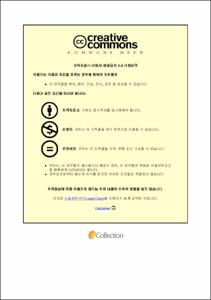비전이성 대장직장암 환자에서 수술후의 근육감소증의 변화가 예후에 미치는 영향
- Abstract
- Purpose/Background : Body composition is modifiable in the perioperative period. There are many indicators of body composition, such as body mass index, sarcopenia, and visceral obesity. Among them, sarcopenia gained increasing attention recently. We evaluate the association of changes in sarcopenia in the perioperative period with oncologic outcomes in non-metastatic colorectal cancer.
Methods : We enrolled 2,333 patients with stage 0-III colorectal cancer who were treated at Asan Medical Center between January 2009 and December 2012. The body composition at diagnosis was measured using abdomino-pelvic computed tomography (CT) using Asan-J software. Two consecutive axial CT images at the level of the L3 lumbar vertebra were processed and averaged for each patient. Sarcopenia was defined using CT-measured parameters such as total abdominal muscle area (TAMA) and skeletal muscle index (SMI, TAMA/height2). Patients underwent CT scans at preoperative, postoperative 6 months-1 year, and postoperative 2nd year-3rd year. Cox proportional hazard analysis was performed to evaluate the association between survival and changes in body composition.
Results: Among the 2,333 patients, 1,728 (74.1%) had colon and 605 (25.9%) had rectal cancer. A total of 1387 (59.5%) patients received adjuvant chemotherapy. According to sarcopenic criteria, 1,155 (49.5%), 890 (38.2%), and 893 (38.3%) patients had sarcopenia at preoperative, postoperative 6th month-1st year, and postoperative 2nd-3rd year, respectively. The 5-year overall survival (OS) rate (95.8% vs. 92.1%, hazard ratio [HR]= 2.234, p<0.001) and 5-year recurrence-free survival (RFS) rate (93.2% vs. 86.2%, HR = 2.251, p<0.001) were significantly lower in patients with preoperative sarcopenia. The 5-year OS and RFS rates were different according to postoperative changes in sarcopenia. Both OS and RFS were lower in patients with persistent sarcopenia at postoperative 2nd-3rd year than in those who recovered (recovered vs. persistent sarcopenia; OS: 96.2% vs .90.2%, p=0.001; RFS: 91.1% vs. 83.9%, p=0.002). In multivariate analysis, persistent sarcopenia, age, and pathologic stage were confirmed as independent factors associated with poorer OS and RFS.
Conclusions: Preoperative and postoperative sarcopenia as well as changes in this condition during surveillance were associated with oncologic outcomes.
|연구목적
수술 전 후 기간동안 체 성분을 조절할 수 있다. 체질량지수, 근육감소증 및 내장 비만과 같은 체성분을 나타내는 많은 지표들이 있다. 그 중 최근에 근육감소증이 주목을 받고 있다. 비전이성 대장직장암 환자에서 수술 전 후 근육 감소증의 변화와 종양학적 결과의 연관성을 평가한다.
연구방법
2009 년 1 월부터 2012 년 12 월까지 서울아산병원에서 치료받은 0-III 기 대장직장암 환자 2,333 명을 대상으로 했다. 진단 당시의 체성분은 Asan-J 소프트웨어를 사용하여 복부-골반 컴퓨터 단층 촬영(CT)을 사용하여 측정했다. L3 요추 수준에서 두 개의 연속적인 축 방향으로 CT 이미지를 처리하고, 각 환자에 대해 평균을 냈다. 근육 감소증은 총 복근 면적 (TAMA) 및 골격근 지수 (SMI, TAMA / 높이2) 와 같은 CT 측정 매개 변수를 사용하여 정의하였다. 환자들은 수술 전, 수술 후 6 개월 -1 년, 수술 후 2 년 -3 년에 CT 촬영을 받았 다. 생존율과 체 성분 변화 사이의 연관성을 평가하기 위해 Cox 비례 위험 분석을 수행했다.
연구결과
2,333 명 중 1,728 명 (74.1 %)이 결장암, 605 명 (25.9 %)이 직장암이었다. 총 1387 명 (59.5 %)의 환자가 보조 화학 요법을 받았다. 근육감소증 기준에 따르면 수술 전 1,155 명 (49.5 %), 890 명 (38.2 %), 893 명 (38.3 %)에서 수술 전, 수술 후 1 년, 수술 후 2 ~ 3 년에 근육감소증을 보였다. 5 년 OS 비율 (95.8 % vs 92.1 %, [HR] = 2.234, p <0.001) 및 5 년 RFS 비율 (93.2 % vs 86.2 %, HR = 2.251, p <0.001)은 수술 전 근육감소증 환자에서 유의하게 낮았다. 5 년 OS와 RFS 비율은 수술 후 근육 감소증의 변화에 따라 달랐다. OS와 RFS는 모두 회복 된 환자보다 수술 후 2 ~ 3 년 에 근육감소증이 지속된 환자에서 더 낮았다 (회복 vs. 지속성 근육감소증; OS : 96.2 % vs. 90.2 %, p = 0.001; RFS : 91.1 % vs. 83.9 % , p = 0.002). 다변량 분석에서 지속적인 근육감소증, 연령 및 병리학적 단계가 OS 및 RFS의 감소와 관련된 독립적인 요인으로 확인되었다.
결론 및 제언
수술 전 및 수술 후의 감시기간동안 근육감소증과 근육감소증 상태의 변화는 종양학적 결과와 관련이 있다.
- Issued Date
- 2021
- Awarded Date
- 2021-02
- Type
- Dissertation
- Alternative Author(s)
- Lee, Chung Yeop
- Affiliation
- 울산대학교
- Department
- 일반대학원 의학과
- Advisor
- 박인자
- Degree
- Master
- Publisher
- 울산대학교 일반대학원 의학과
- Language
- eng
- Rights
- 울산대학교 논문은 저작권에 의해 보호받습니다.
- Appears in Collections:
- Medicine > 1. Theses (Master)
- 파일 목록
-
-
Download
 200000363951.pdf
기타 데이터 / 940.07 kB / Adobe PDF
200000363951.pdf
기타 데이터 / 940.07 kB / Adobe PDF
-
Items in Repository are protected by copyright, with all rights reserved, unless otherwise indicated.